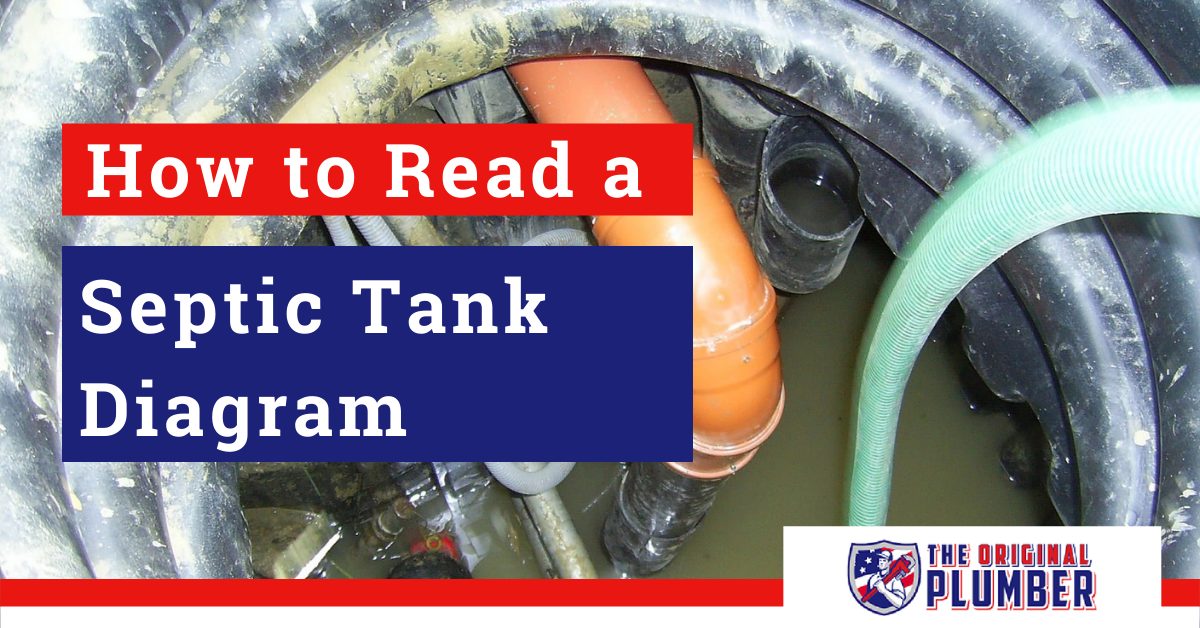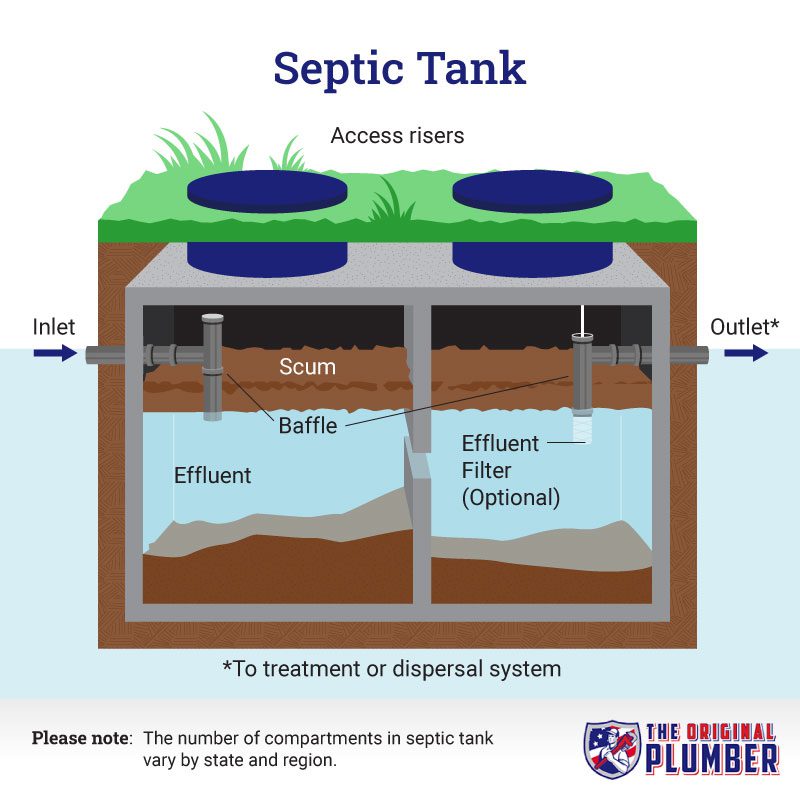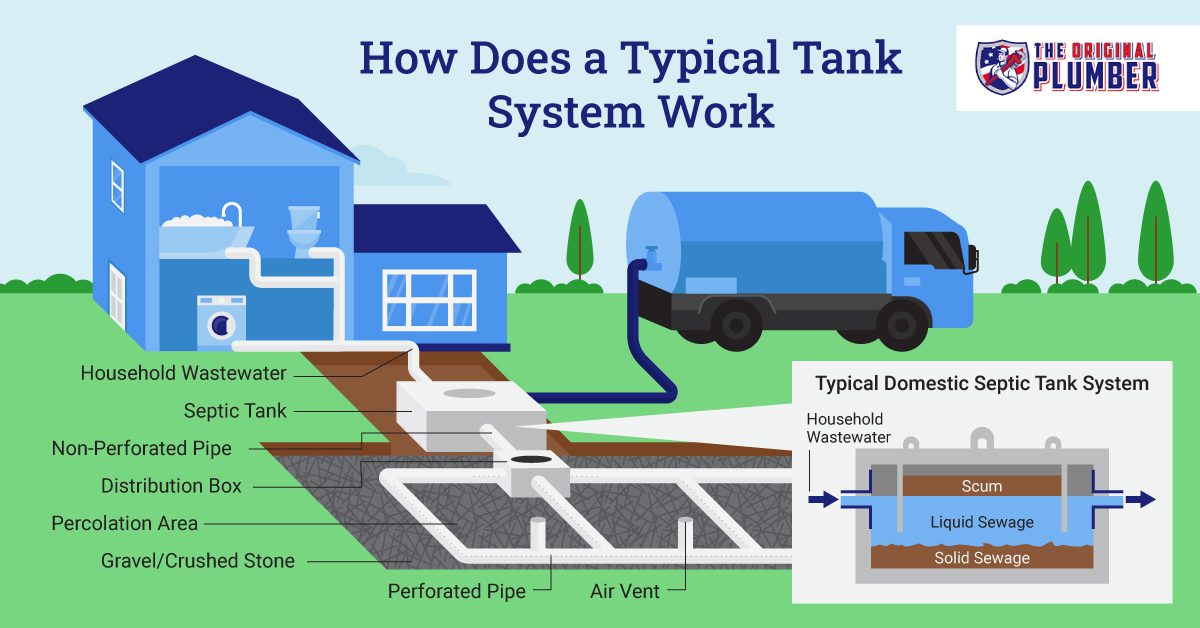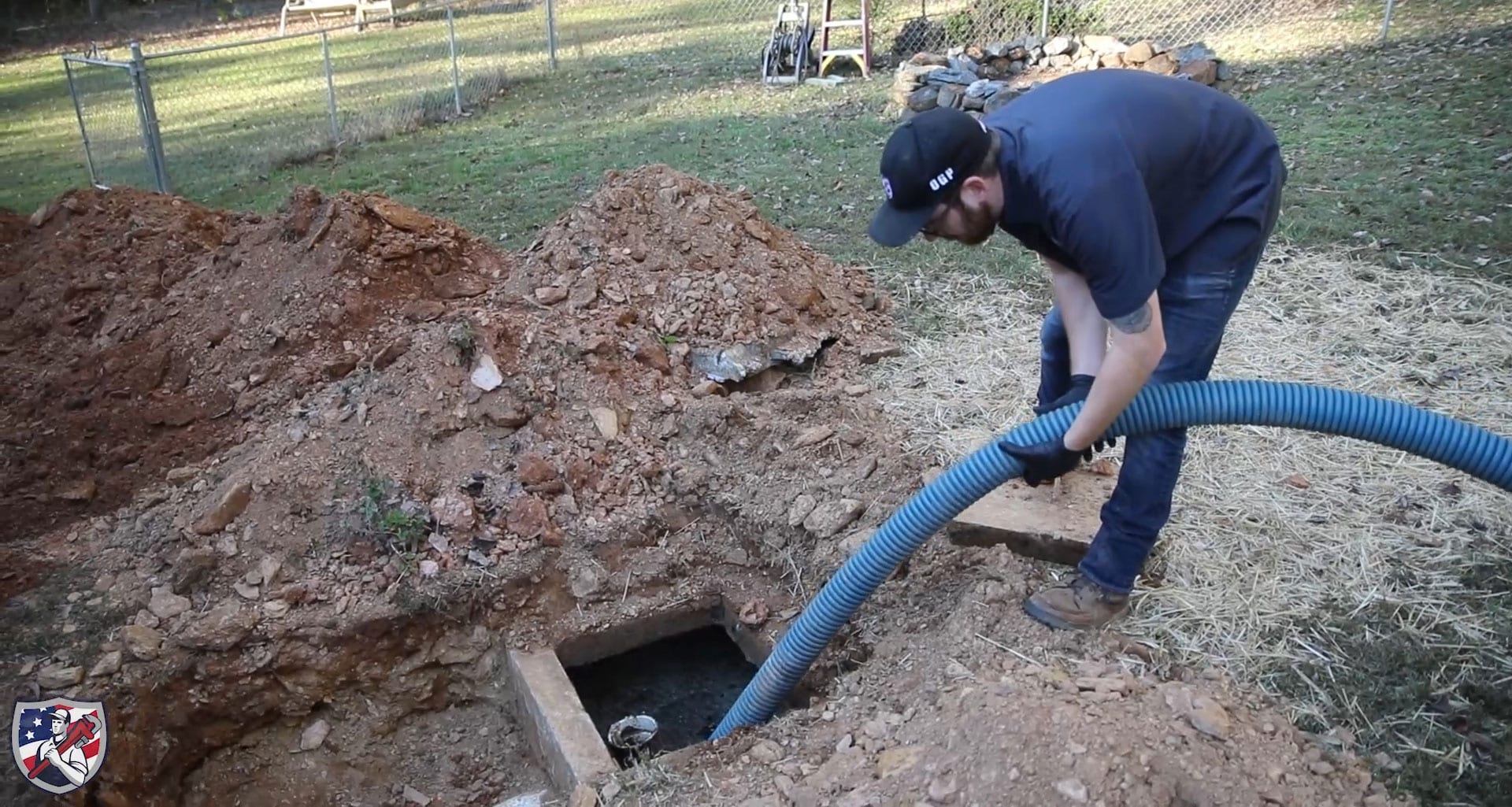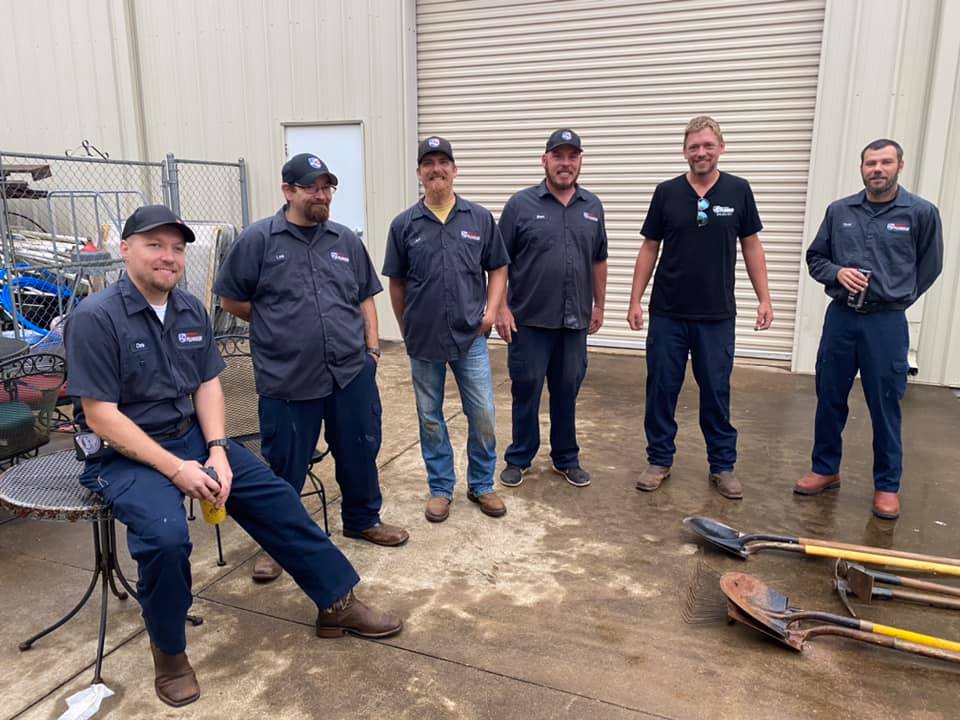A diagram for septic tanks is essential to have when you’re trying to diagnose a problem with your sewage system—trying to read a diagram, though, is a different matter. Let’s walk through how to read your diagram step by step. We’ll go over each part of the diagram and what each section of your system does for you. We’ll also address some of the problems you might encounter with your system.
What Does a Diagram Look Like?
A diagram looks a lot like this; it goes over the ins and outs of the tank and the in-depth system that manages your waste. Upon reviewing this information, you can rule out different areas where a problem occurs.
For example, you might experience flooding or a strange and unpleasant smell. You may also experience wastewater backing up into your sink if your tank has specific problems. Each of these issues can tell you where in your sewage system your problem resides. Digging up septic systems is a complicated task and can be problematic. Finding the area with a problem before you dig makes your life much easier.
This diagram is essential as it can help you plan projects on your property quickly and efficiently. You can’t drive over different aspects of the septic systems and knowing where those parts are is incredibly important.
The Septic Tank
What Does a Septic tank Look Like? The tank itself will be a large part of the septic systems diagram because it’s the treatment tank for your waste. Usually a cylinder or square in design Inside of the tank, there will be several different kinds of waste. Scum sits on the top and usually consists of soap, oils, etc. Liquid sits in the middle; this is going to be wastewater such as greywater from the sinks, toilets, and appliances. At the bottom will be the more solid waste.
Sometimes there is even a divider system in between to help manage the ratio of wastewater and scum to sludge. Septic systems that are set up this way help manage the flow of your system, keeping it from overflowing.
Drinking Water and Wastewater
It is a requirement by the CDC to have your septic system a minimum of fifty feet away from your drinking water source! If you don’t listen to this rule, you run the risk of contaminating your drinking water with your wastewater which can make you severely ill.
If you purchase a property and the septic system is not a minimum of fifty feet from your well, you should get a new system installed and call us about removing the old system.
Using Wastewater – Don’t
If you find out that your drinking water is tainted, stop using it immediately. Don’t bathe in it, wash anything with it, do not drink it, and call us immediately. Using wastewater-tainted water can make you incredibly sick, even if you’re washing your clothes or dishes.
Multiple Kinds of Set Up’s
Depending on your living situation, you can have various kinds of septic tanks set up. For example, if you live in a suburban area, your septic system works by connecting to others after your septic tank itself.
Where if you live out in the countryside, your septic system is more likely to be only for your home. Understanding what kind of system you have is essential for managing a septic tank problem.
If you’re in a suburban-like area, make sure your septic tank is your responsibility before you try to tackle a problem. It may be the responsibility of a landlord or landowner. If so, notify them immediately if any problems arise.
Overloading a Septic System
Overloading a septic system is often accomplished by flushing far too many solids that you shouldn’t, such as food. You can also overload a septic system by using appliances, such as a washing machine, more often.
Septic Tank Clean Out
Cleaning out your septic tank yourself is a risky task, especially when it’s overflowing. The fumes alone can be hazardous for your health, which is why it’s always best to work with us to ensure your problem is resolved. We are fully prepared to tackle helping you clean out your septic tank.
What’s a Drain Field?
A drain field is a network of perforated pipes running underground in gravel beds, acting as a soil absorption system. These pipes are perforated and help drain out the scum and wastewater from your septic system in a safe manner. The draining wastewater is then treated naturally so it can be reintroduced into the groundwater.
Are Drain Fields Required?
Drain fields are required for a septic system that you can’t avoid. This part of your septic system ensures you don’t get backed up and your wastewater is properly managed. This part of your system helps bring the wastewater away from the rest of the septic system and your living area.
What If I Don’t Have A Drain Field
If you don’t have a drain field, you’re about to have a bad time. Your wastewater will eventually get backed up in your septic system, and before you know it, you’ll have a home flooded with your waste. Ensuring you install or have a drain field is essential to ensure that your septic system runs as smoothly as possible.
If you’re not sure if you have a drain field, looking at your diagram should help you find out. It should also help you locate it in case it needs maintenance of any kind.
Septic Filter (Effluent Filter)
The septic filter, otherwise known as an effluent filter, is going to be found inside your septic tank. You should never try to fix or change this filter yourself! The inside of a septic tank is dangerous, and you should always consult us if you believe you have a problem with the filter. This filter is located before the drain field pipes begin.
Setting this filter before the drain pipes ensures that no solid waste will enter the drain pipes, keeping your solid waste where it can be broken down. This filter also ensures that you don’t accidentally contaminate the ground or groundwater around your septic system.
Regardless of the state of your pump or drain field, you need to have a septic filter; catching the solids before they get to smaller parts of your septic system is essential to avoid a large majority of potential problems.
Pump-Tanks
Pump tanks are unique small tanks set up in your septic system designed to blast water into your absorption field. Though they’re not a requirement in your septic system, they do provide services that optimize your septic system.
Pump tanks help you keep solids from getting through the system, which keeps them from clogging the drain field.
The pump tank can also tell the system when to turn off and on. Many of them even have a high water warning system, letting you know exactly when your system is experiencing problems.
The Distribution Box
The distribution system is specifically designed to help your system distribute wastewater equally between the drain field lines.
This helps distribute the wastewater from your system more efficiently and keeps it from backing up, ensuring that your system runs smoothly and efficiently every time.
This removal of wastewater leaves room in your septic tank for more solid masses. Your septic system would become full, very fast without a distribution box.
The Leach Drain Field
Another essential part of your septic tank which receives the effluent from the tank itself is the leach drain field. This part of the septic system is a network of drain pipes. The effluent then moves through the soil, being filtered and becoming safe water as it’s reintroduced into the water system.
This section is another of many essential parts of your septic system as it both cleans and purifies the water and ensures that wastewater that has not yet been cleaned or purified does not make it into your drinking water.
Home Inspections
If you’ve had your home inspected lately, you might be feeling confident in your septic system. Unfortunately, your sewer system is not a part of your home inspection. Though it does handle your waste, it is a system outside of your home instead of inside of it, so you may need to have your septic system inspected to ensure it won’t be problematic.
Overall this means your home itself can pass inspection while there’s something wrong lurking in your sewer system or septic tank. Don’t let the fact that your home has been inspected fool you; if you have any issues with your septic system once you move in, they were likely there when the inspection was done.
Putting it All Together
Every part of your septic system works for you from flushing your toilet to the drain field itself. A septic system is one of the most ethical available ways to handle waste. Each part works uniquely together to ensure that your septic system works as efficiently as possible.
Once each piece is fitted together, your system should work smoothly, but there is always the potential for problems. From septic systems backing up to flooding of your septic tank and so much more, maintenance is essential to keep the system in good shape and it also helps identify problems before it’s too late.
If you run into septic tank problems, your best bet is to give us a call to schedule a consultation, so we can help you get your system in tip-top shape as fast as possible.
Call The Original Plumber & Septic today for a free consultation. We’re available seven days a week to help with all of your septic and plumbing needs for your home or business. One of our friendly and professional team members will be able to answer your questions. We offer a wide range of services for septic systems, including septic tank pumping.


